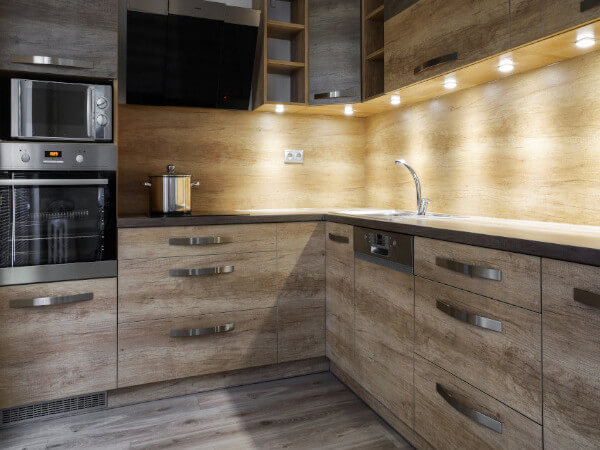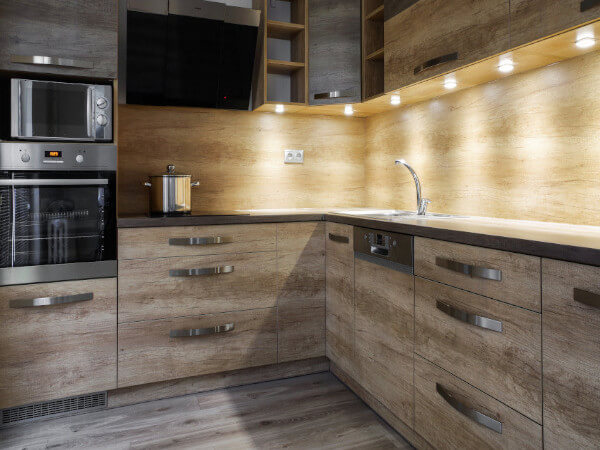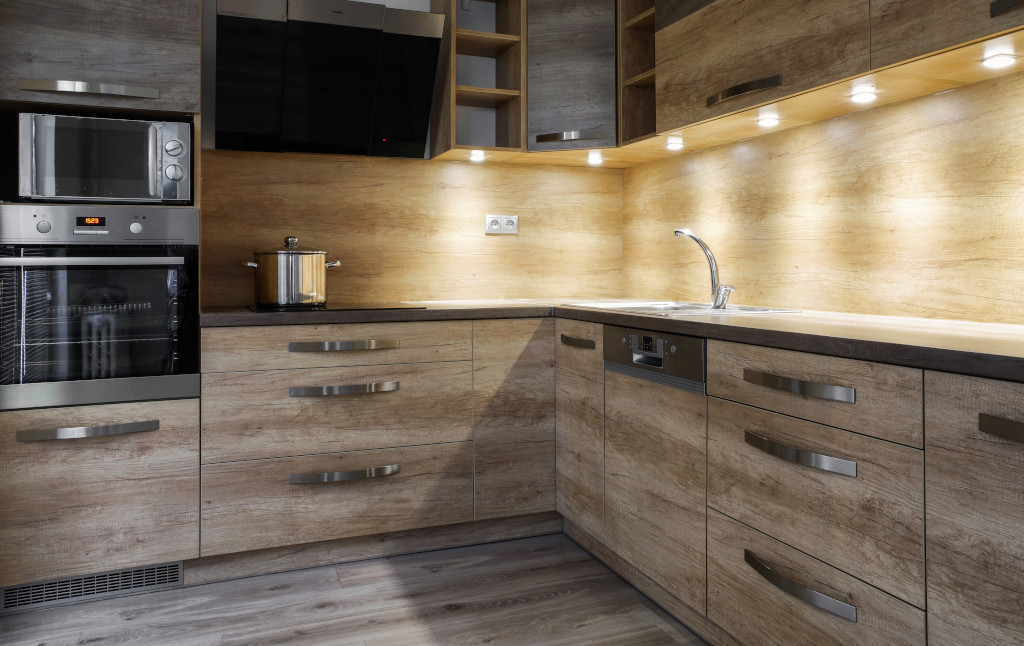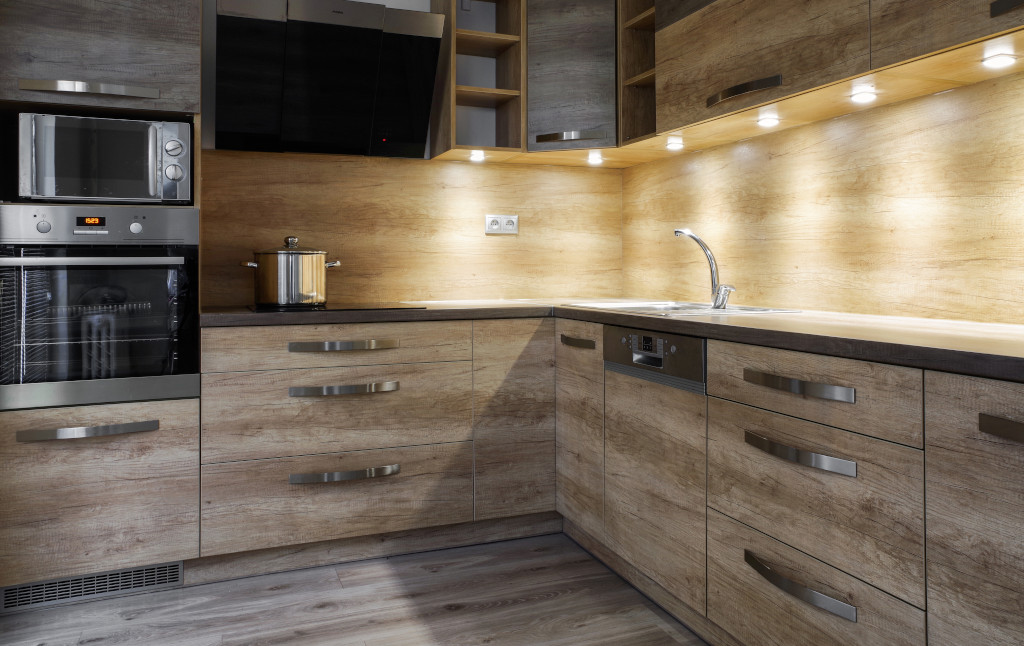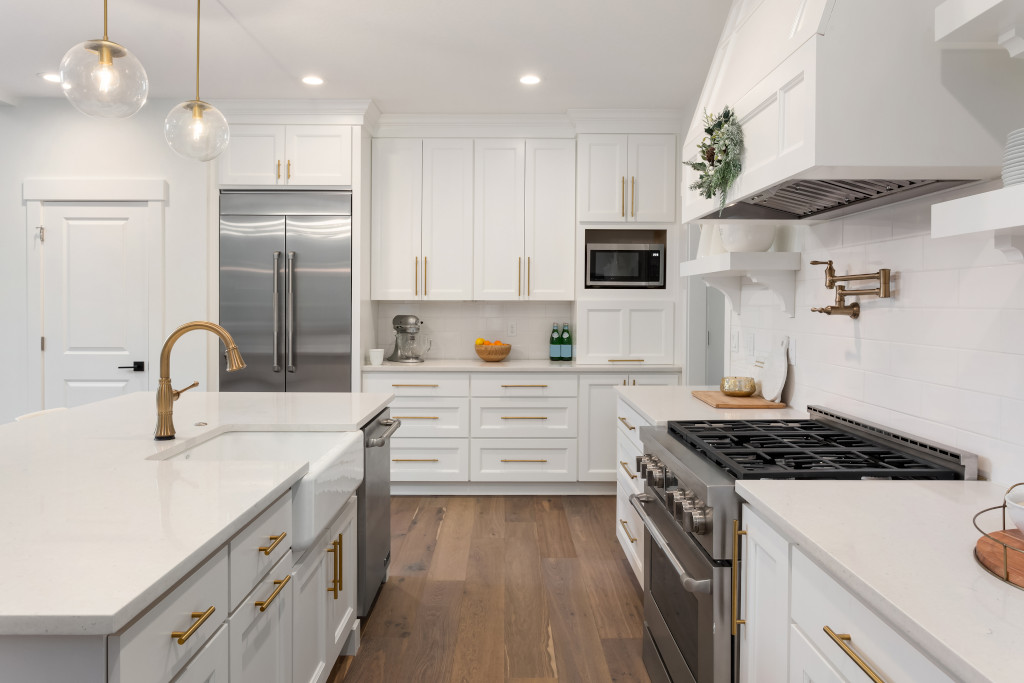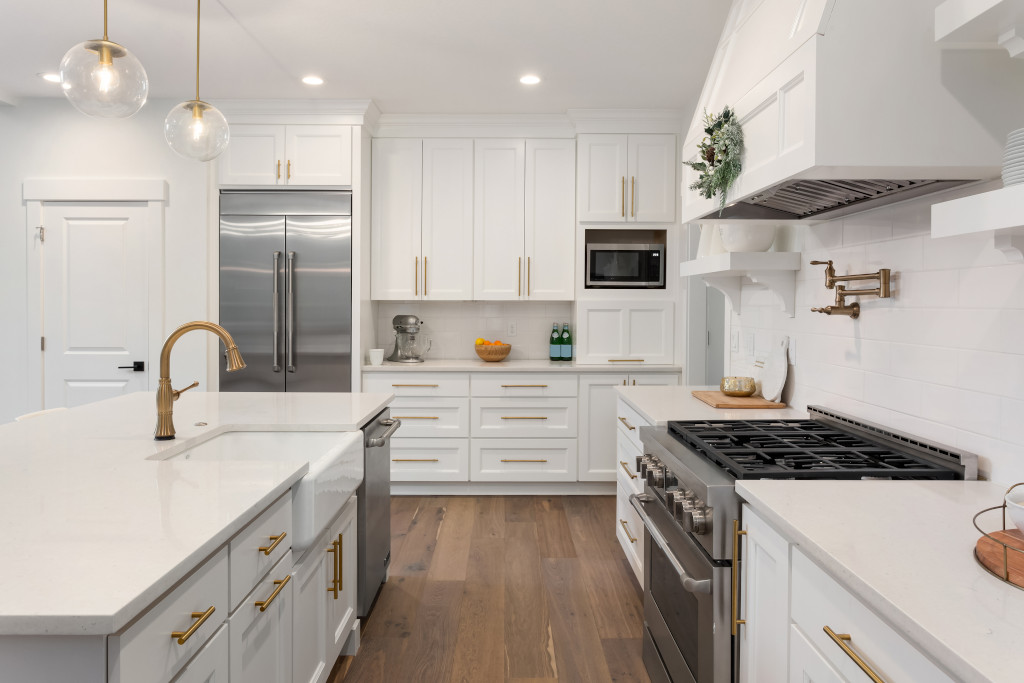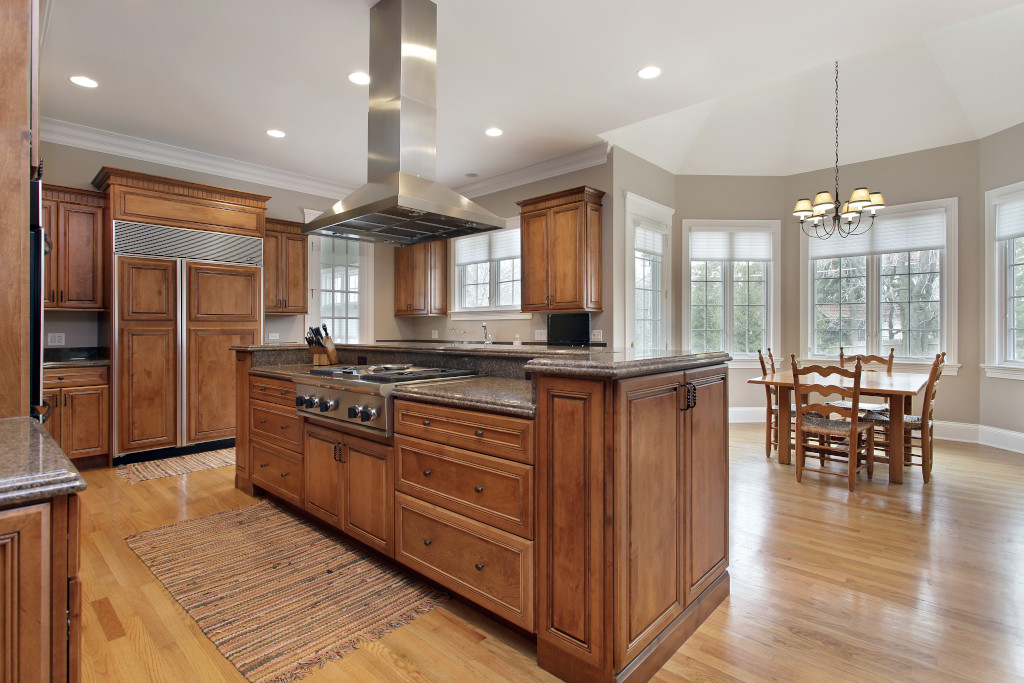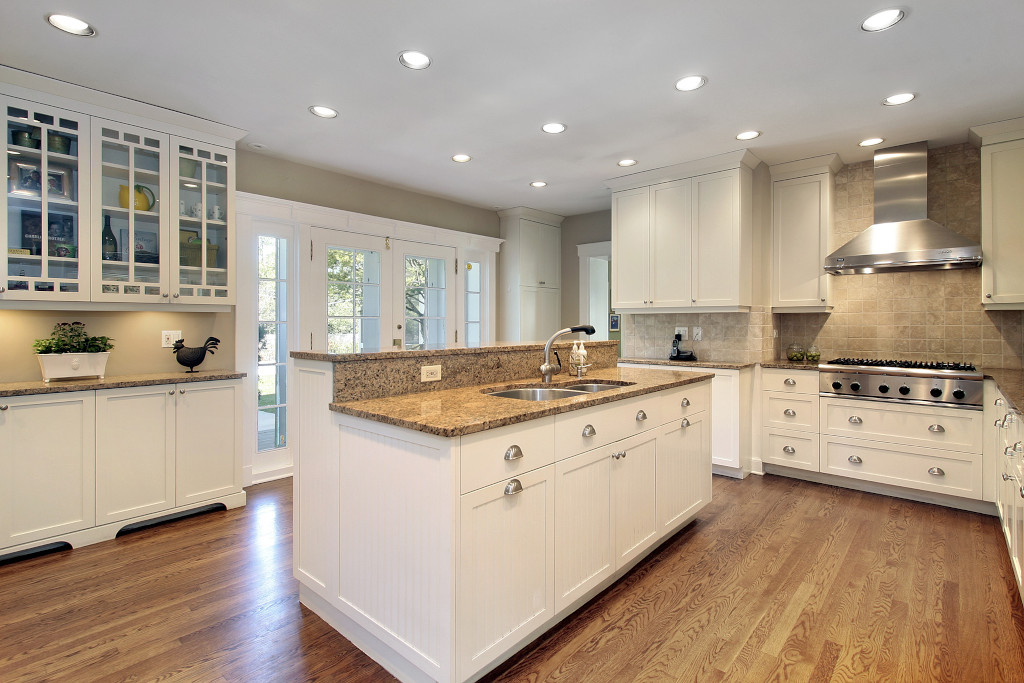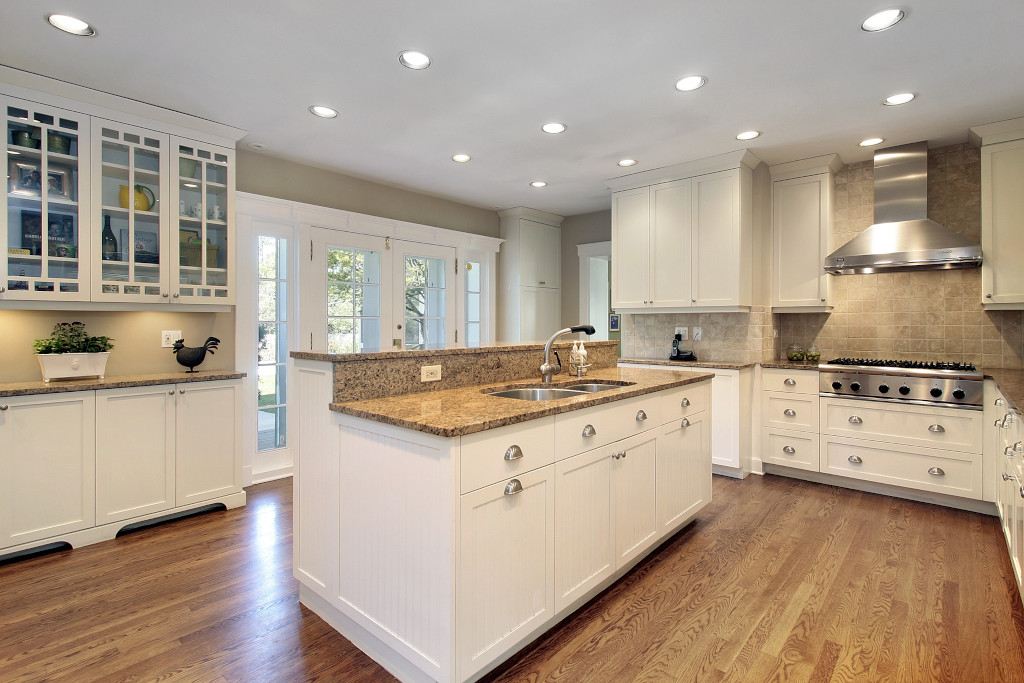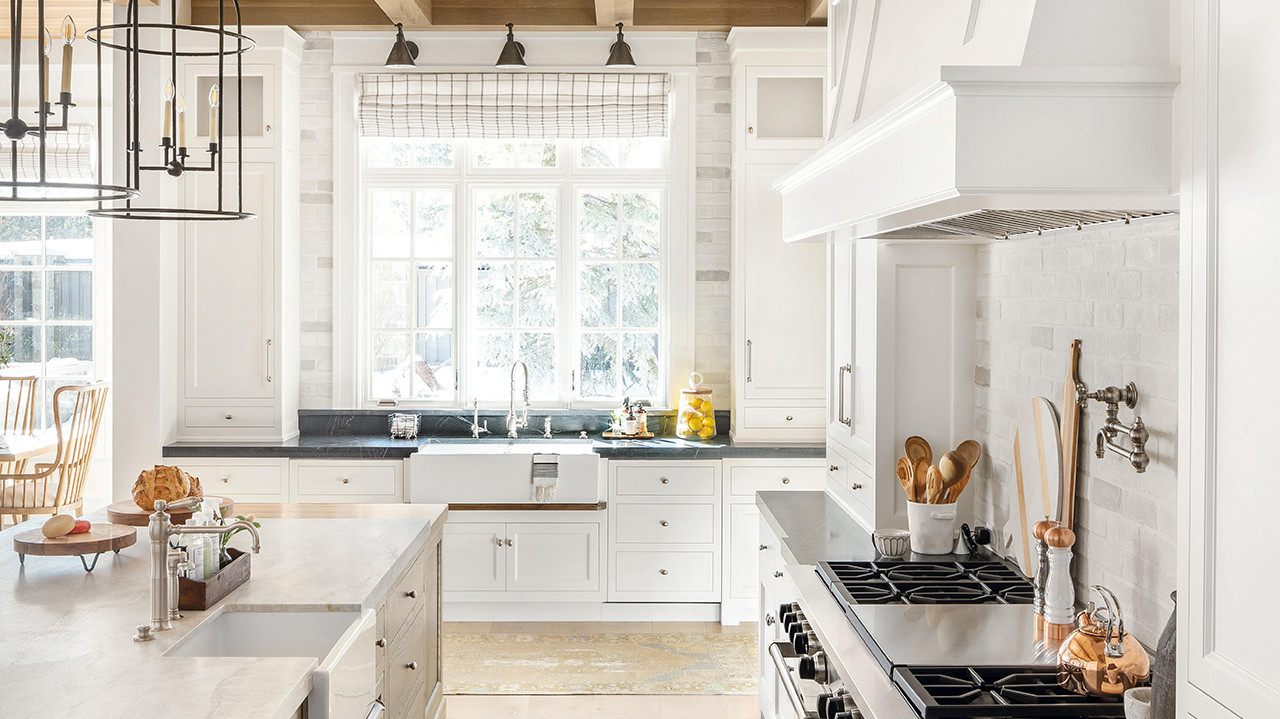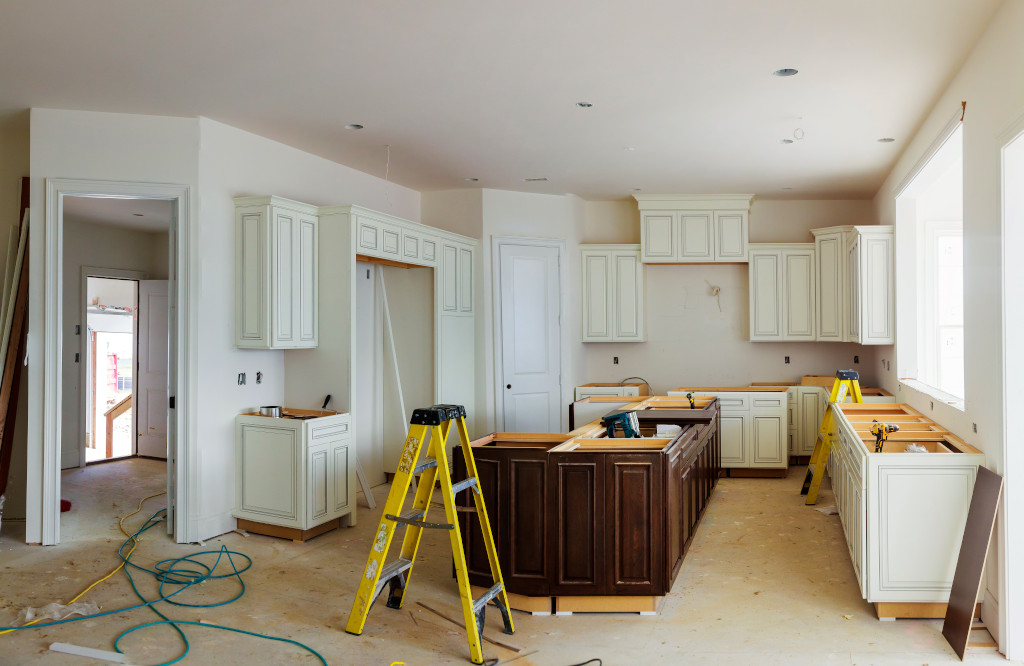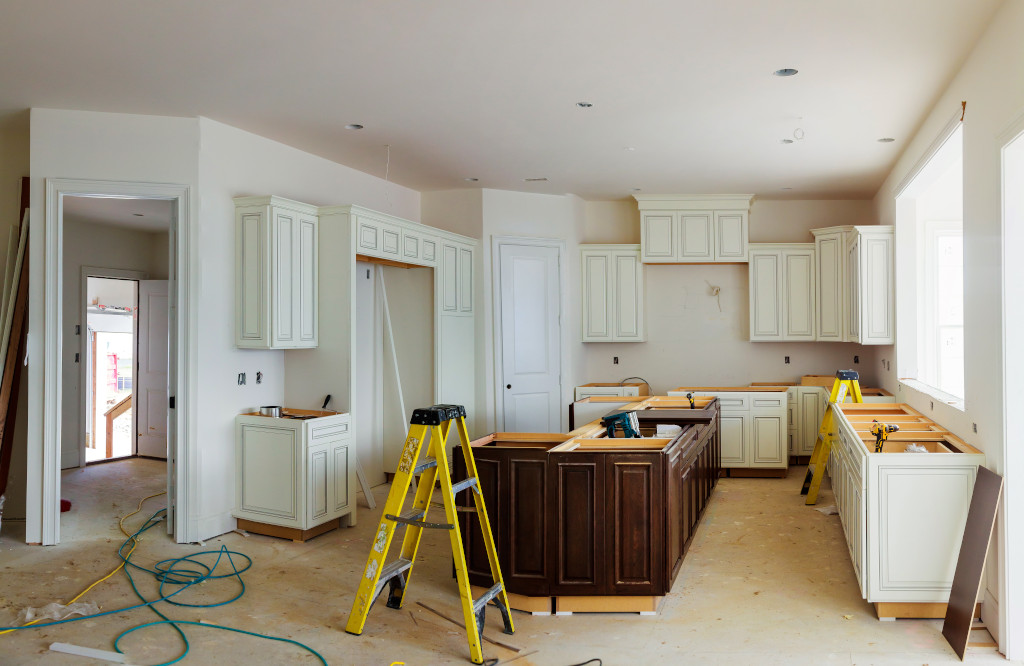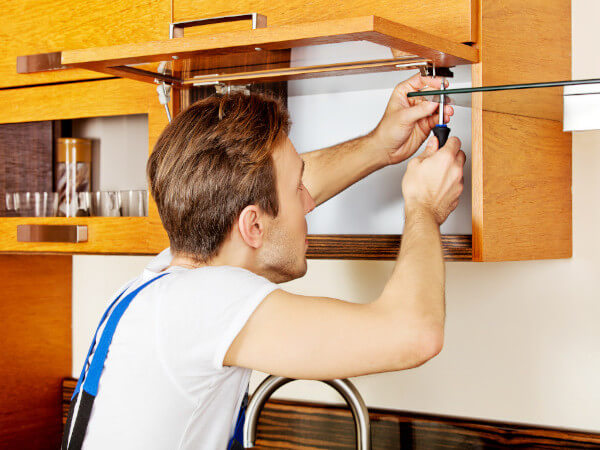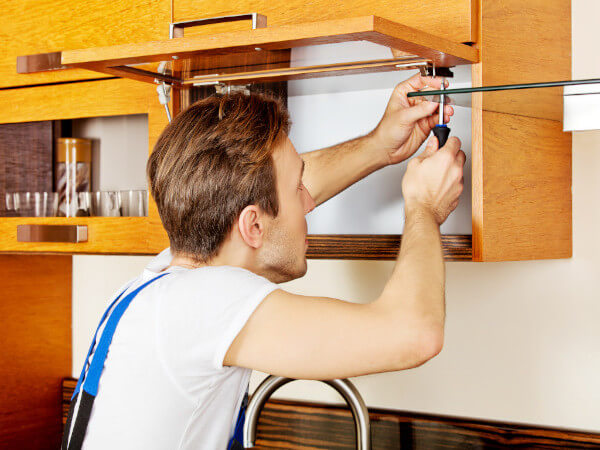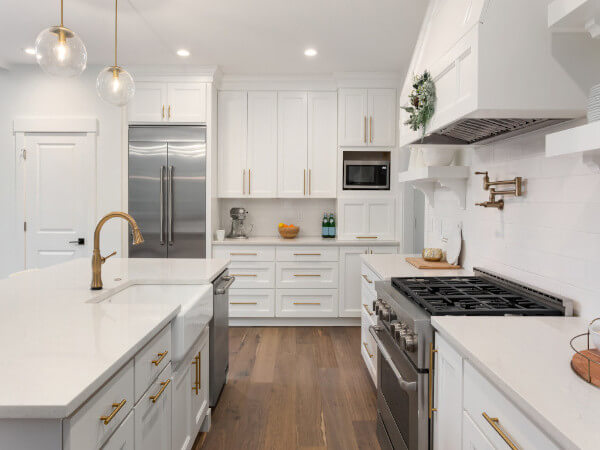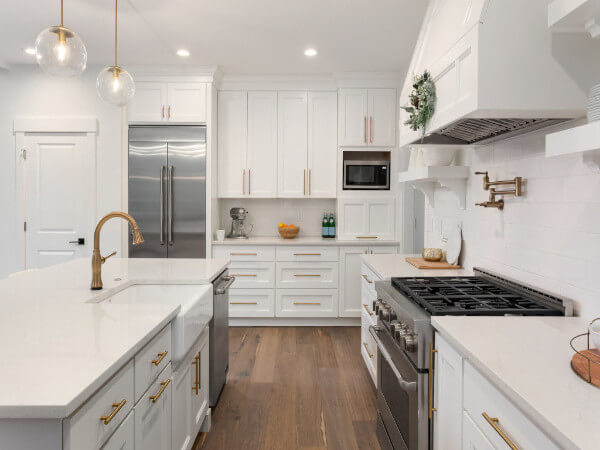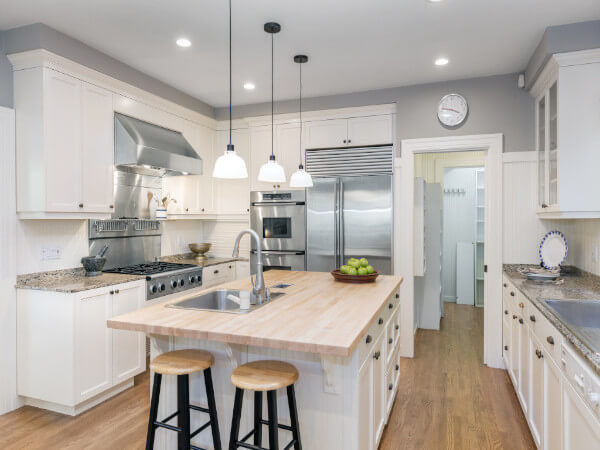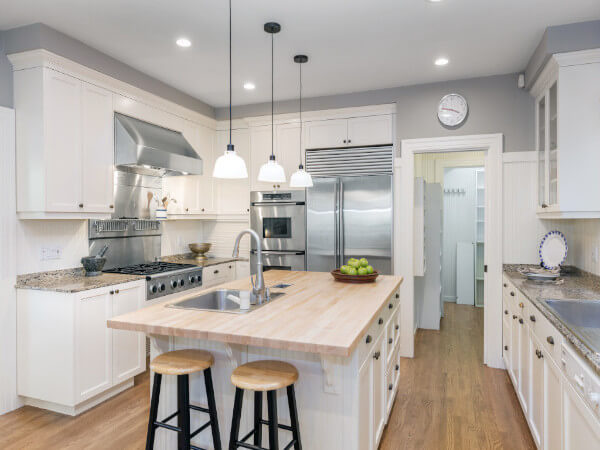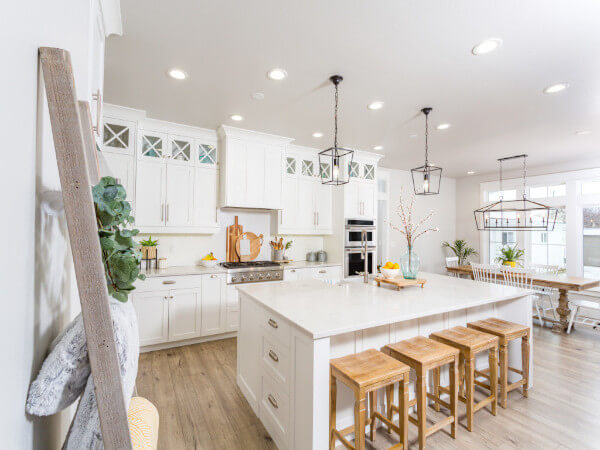The desire to create a spa-like environment in the bathroom, a place to rest and rejuvenate, has long impacted trends in shower systems. With multiple users in the home, flexible, innovative products that allow each person to tailor the experience as needed are in high demand.
“At Duravit, it is essential that our product offerings, integrated technology and design sensibility aid designers and homeowners in creating and enjoying a bathroom space that is relaxing, rejuvenating and offers benefits to achieve a healthy lifestyle,” says Tim Schroeder, president of Duravit North America in Duluth, GA.
Patrick Weidl, director, business development at ThermaSol in Round Rock, TX offers, “Homeowners understand the importance of self-care, and more and more they want to incorporate steam showers and all the attending attributes…chromatherapy, aromatherapy and yes, even technology.” From a design standpoint, he adds, “Less is still more. Minimal design in showers remains a strong trend.”
“People want more than ever to be able to relax and enjoy their time in the shower,” states Jayson Auger, product designer at Kalia, based in Sainte-Marie, Québec, Canada. “They want to be able to activate multiple accessories at the same time, up to two or three items, such as the rain head, hand shower or tub spout,” he adds.
Technological advancements also have an impact on shower space. “Consumers continue to be excited about the convenience offered by smart technology and voice-activated products, and the bathroom is no exception,” stresses Lindsey Jovanovic, director, marketing – bath for Moen, based in North Olmsted, OH.
Other top shower system and enclosure trends include attention to sustainability, convenience and flexibility, and continued interest in both matte black finishes and a natural look. That’s according to manufacturers recently surveyed by Kitchen & Bath Design News.
Personal Refuge
Customizing the shower system allows homeowners to create an individualized restorative space in which to relax and rejuvenate. Flexibility is key in allowing all family members to create their own spa-like experience at home. Features such as music, chromatherapy and variety in spray are all essential to creating these experiences, manufacturers remark.
“Moen understands that consumers are really looking for a personalized experience in the shower and want to feel like their space suits their needs,” Jovanovic says. “The new Nebia by Moen Quattro products offer four distinct showers all in a single showerhead – individually designed to relieve, soothe, clarify and cleanse unlike ever before. Now, everyone in your home can dial in the perfect shower to meet their preferences, while also saving nearly half the water of a traditional showerhead,” she explains.
The features available to customize the showering experience vary widely. Manufacturers say that music is one important feature and having speakers that hold up well is essential.
“Music continues to be among the most popular elements to customize your showering experience; streaming the right playlist or meditation practice into your shower instantly transforms a more utilitarian moment of the day into one that focuses on relaxation and self-care,” stresses Tom Sindelar, performance showering product manager for Kohler Co. in Kohler, WI.
“Just as with our other showering systems, Kohler has developed innovations at various price points to make this experience an attainable one, whether it’s with the Moxie Showerhead + Wireless Speaker, or integrating the amplifier module into the DTV+ system,” he reports.
“Good solid speakers are very much in demand; if you’re going to listen to music or watch a soothing video, you’ll want the best in-shower speakers,” Weidl says.
“Chromatherapy is becoming more and more recognized for its ability to both soothe and/or energize,” he adds.
In addition to features that create a soothing environment, such as music, scent and color, variety in how the water flows is also an important consideration. “The demand for multiple water delivery outlets, such as body sprays, handheld showers and rain heads, continues to grow,” says Sindelar. “We’re also seeing a growth in demand for showerheads and hand showers that deliver multiple functions, empowering the user to transition between full coverage sprays [and] massage settings to customize the experience even further.”
“While it’s important for designers to dial into their clients’ desired experiences, it’s also especially important to address who in the household will be using the shower regularly,” he adds. “For families with young children, solutions like the HydroRail and hand showers can help ensure different users can make the necessary adjustments for an enjoyable experience.”
Sustainable Showers
Manufacturers strive to be environmentally responsible in their practices, and with showers that means finding ways to conserve water, not only to meet legal restrictions in various regions, but also to satisfy consumer demand for sustainable options.
“There has been a shift in the way products are designed from the get-go,” notes Stephanie Dietrich, marketing, Blu Bathworks based in Burnaby, British Columbia, Canada.“The environment and sustainability have been placed in the forefront for most consumers and designers alike, and water conservation is no exception. While places like California are forced to put in place regulations to conserve water, many conscious consumers across North America place importance on purchasing an environmentally focused product regardless of regulation.”
“There continues to be consumers who are looking for more sustainable options in the shower. For those who are interested in an eco-friendlier showerhead, the Nebia by Moen spa showers are a perfect fit,” offers Jovanovic. These showerheads use atomization, the process of breaking up water into tiny droplets, to create the sensation of more water while using nearly half the water of traditional showerheads, she says.
“Duravit has long had a respect for water conservation and environmental awareness – it is a part of our company heritage and applied widely across our product design,” explains Schroeder. “We are a proud WaterSense partner and are always following along with updated regulations.”
Sindelar reports, “Rather than scaling back to one showerhead, designers are instead using it as a moment to educate and show homeowners how digital valves or mechanical diverters enabled for water usage from one outlet at a time can address water conservation without compromising on the ability to customize the experience.”
Auger says that new requirements for hot water regulation also have led to the development of new products, such as a thermostatic pressure balanced shower valve that has a hot water temperature limit of 43°C (109°F), making it suitable for the new senior residences (SR) standards of safety in their territory.
Steam showers are a spa-like feature in the bath that offer therapeutic benefits without using excess water. “The average steam shower uses less water than the average shower, and once everyone learns this they are (a) surprised and (b) relieved,” says Weidl. “On average, a 30-minute steam shower uses just two gallons of water, and that’s considered a long steam. Showers use that amount or more per minute. The average American shower lasts about eight minutes, so water consumption for a traditional shower can surpass 16 gallons.”
Smart Spray
Smart technology has woven its way throughout the home and has made it into shower system controls as well, manufacturers say. Digital controls add convenience and the ability to easily personalize the shower experience.
“As existing technology advances and new technology is developed, we have seen more and more inclusion throughout the household,” Dietrich notes. “The bathroom is no exception. The popularity of digital controls is growing in the market as they offer desirable features such as superior temperature control and flow-rate customization.”
“As smart home controls play a bigger role in how people live and interact with their homes, there’s an increased demand for bringing that same level of control and connectivity to their showers and baths,” Sindelar explains. “Digital showering systems, including our budget-friendly DTV Prompt and more luxurious DTV+ Systems, offer a streamlined, clean aesthetic – eliminating the need for multiple valve trims on the wall.”
Jovanovic remarks, “We’ve seen smart, connected products become more popular in the bathroom, especially products that offer consumers options to customize their experience. When our U by Moen Smart Shower launched in 2017, we were first-to-market with this kind of technology. It provides homeowners with countless ways to create their ideal showering experience – including the ability to set up to 12 personalized presets for everything from shower temperature to the length of your shower, and three choices to control the shower: voice activation, a smartphone app and an in-shower controller.”
Moen has recently expanded U by Moen’s capabilities, she says, to offer even more innovative ways to interact with water. These include enhanced functionality with Amazon Alexa, and compatibility with Apple HomeKit and Google Assistant. “Homeowners can have the shower incorporated into their smart home ecosystem and enjoy the ease and convenience of a totally connected lifestyle,” says Javonovic.
ThermaSol’s steam system is also compatible with Alexa, Weidl reports. “People may think that technology and steam showers are contradictions, but in fact our ThermaTouch controls are completely waterproof, and they allow users to customize their steam shower experience from water temperature, chromatherapy colors, downloadable videos, music, sports channels – whatever it is that makes them feel comfortable,” he adds.
When incorporating technology into shower products, convenience and ease of operation are imperative, manufacturers say. “People are looking for user-friendly products in every aspect of their life,” explains Auger. “Keeping that in mind, customers are starting to look at shower valves with the push-in button for the diverter, to go from one accessory to the other instead of operating a handle. The shower valve is then as easy to ‘control’ as a car dashboard with multiple options for AC/Radio, etc.”
Schroeder says Duravit has seen an increased interest in thermostatic valve technology in the shower space. “Duravit’s Blue Box offers easy installation and is temperature controlled with an anti-scald setting. The shower cartridge comes with trim to avoid damage during construction or installation and can use any of the different trims pending the installation type. The Blue Box has a six-point fixation, allowing for uneven surfaces and adjustable alignment of the handle and plate up to 3.5mm. This type of flexibility in installation and design is what consumers and designers are looking for to create a seamless aesthetic from start to finish,” he remarks.
Individual Style
Finishes, tile patterns and door styles depend heavily on the consumers lifestyle and taste. Manufacturers strive to offer a wide range of options to meet this demand. Still, there are some finishes that stand out, including matte black, brushed gold and natural looks.
“We are seeing a lot of matte black being specified, along with the perennial favorites of polished chrome or nickel,” says Weidl.
“In finishes, matte black is still growing in popularity, and brushed gold is also trending upward,” concurs Kiersten Jung, director of marketing for Basco Shower Enclosures in Mason, OH.
Auger agrees that matte black is a high trend for every bathroom product, including shower doors, faucets and even shower bases. “What we call an ‘Italian shower base’ is also in demand, which is a very shallow base that is nearly as thin as the floor,” he adds. Shower shields, like the company’s Pratika, “are a way to build your own Italian shower, which is very minimalistic,” he remarks.
Dietrich says that, along with matte finishes, “We have seen a design focus on the inclusion of organic materials and finishes. Things like Blu’s solid surface blu•stone, which emulates the look and feel of natural stone, helps to cultivate a native atmosphere in the bathroom setting.”
Products that allow consumers to express their sense of style are essential, but the way the products operate is equally important. “Consumers want beautiful looking fixtures for their homes that won’t sacrifice on function,” Jovanovic stresses.
For door styles, Jung notes, they see trends in heavy glass and frameless enclosures continuing. “Clear glass is the most popular by far, so that homeowners can showcase their entire shower space design and tile,” she offers.
Barn door style rolling doors are also continuing to add a modern flair into the bath space, Jung adds. “When considering layout, a rolling door often allows for a more generous shower space because there is no need to plan for the out-swing requirements of a swing door.”
Auger, on the other hand, says they are seeing a big comeback of framed structures. “For a long time, frameless shower doors have been in high demand. Now, people who are looking to make a statement in their bathroom choose a framed shower door, especially since black is such a big trend. Our Ikonik shower door is a matte black framed sliding shower door that has become an instant hit,” he notes.
Weidl observes, “While we see a lot of interest in open showers, as the manufacturers of steam showers, we always advise designers to include some sort of separation between the shower area and the rest of the bathroom.”
The footprint of the space often dictates the size of these shower systems. Designers and homeowners make use of all available space, installing a larger shower, when possible, manufacturers say.
“In bathrooms with larger footprints, freestanding baths double as a focal point and beautiful, sculptural element, bringing an energy of luxury and relaxation to the space. This shift toward more organic, sculptural forms reflects a growing preference for contemporary designs and clean lines,” offers Sindelar. “Rather than existing independently, designers are finding ways for showers and freestanding baths to coexist – whether it’s converting the entire suite into a wet room or housing both bathing experiences in a shared space ensconced in tile behind a glass wall to contain and control moisture.”

The post Connected Serenity appeared first on Kitchen & Bath Design News.
Did you miss our previous article…
https://www.thegreenwoodkitchen.com/?p=516
